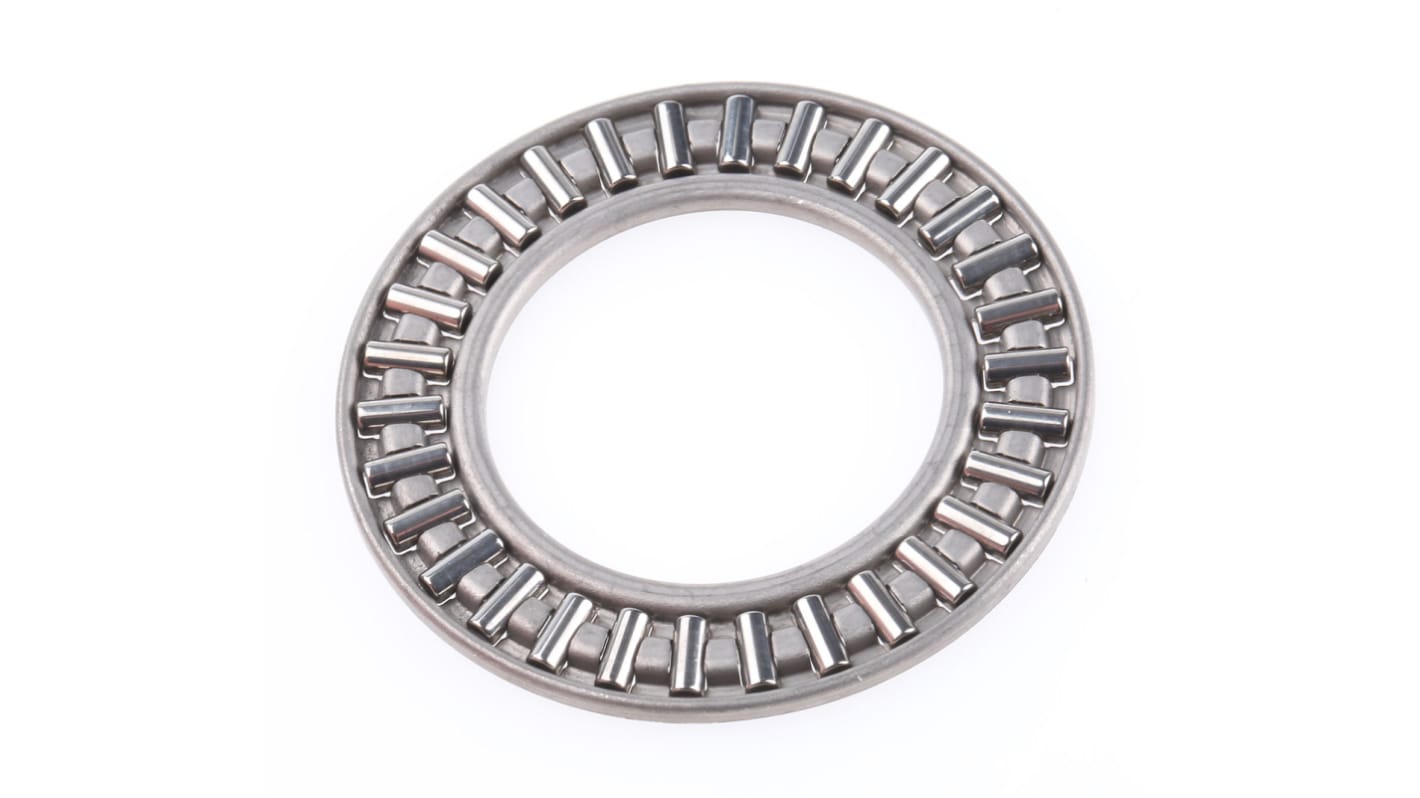SKF AXK 2542 25mm I.D Needle Roller Bearing, 42mm O.D
- RS Stock No.:
- 514-304
- Mfr. Part No.:
- AXK 2542
- Brand:
- SKF

Bulk discount available
Subtotal (1 unit)*
£4.10
(exc. VAT)
£4.92
(inc. VAT)
FREE delivery for orders over £50.00
Limited stock
- 86 left, ready to ship
- Plus 226 left, ready to ship from another location
Need more? Click ‘Check delivery dates’ to find extra stock and lead times.
Units | Per unit |
|---|---|
| 1 - 4 | £4.10 |
| 5 - 9 | £3.94 |
| 10 - 24 | £3.88 |
| 25 + | £3.76 |
*price indicative
- RS Stock No.:
- 514-304
- Mfr. Part No.:
- AXK 2542
- Brand:
- SKF
Specifications
Technical Reference
Legislation and Compliance
Product Details
Find similar products by selecting one or more attributes.
Select all | Attribute | Value |
|---|---|---|
| Brand | SKF | |
| Inside Diameter | 25mm | |
| Outside Diameter | 42mm | |
| Roller Bearing Type | Needle | |
| Race Width | 2mm | |
| Bore Type | Parallel | |
| Static Load Rating | 60kN | |
| Cage Material | Sheet Steel, Steel | |
| Number of Rows | 1 | |
| Dynamic Load Rating | 13.4kN | |
| Maximum Speed - Grease | 2200rpm | |
| Fatigue Limit Load | 6.7kN | |
| Maximum Speed - Oil | 3200rpm | |
| Select all | ||
|---|---|---|
Brand SKF | ||
Inside Diameter 25mm | ||
Outside Diameter 42mm | ||
Roller Bearing Type Needle | ||
Race Width 2mm | ||
Bore Type Parallel | ||
Static Load Rating 60kN | ||
Cage Material Sheet Steel, Steel | ||
Number of Rows 1 | ||
Dynamic Load Rating 13.4kN | ||
Maximum Speed - Grease 2200rpm | ||
Fatigue Limit Load 6.7kN | ||
Maximum Speed - Oil 3200rpm | ||
RoHS Status: Exempt
- COO (Country of Origin):
- DE
SKF Thrust Needle Roller Bearing, 25mm ID, 42mm OD - AXK 2542
Use this thrust needle roller from SKF to support axial loads on rotating parts of your industrial equipment. Thanks to the cylindrical rollers in a band around its perimeter, it can transfer the axial load from a stationary motor to the rotating shaft. This bearing is made entirely of steel, which is durable and resistant to corrosion, so you can rely on it for long-term performance, even in harsh environments. An internal diameter of 25mm makes this unit a good fit for small shafts.
• Maximum speeds of 3000rpm (rotations per minute) on oil and 2000rpm on grease to handle high-speed operation
• Light weight of 7g so it's easy to handle and won't strain your equipment
• Static load rating of 60kN (kilonewtons) and dynamic load rating of 13.4kN to handle heavy-duty tasks
Applications
• Industrial pumps
• Gearboxes
• Electric motors
What's the difference between a thrust ball bearing and a thrust roller bearing?
Thrust ball bearings have balls around their perimeter, while needle roller bearings rely on small cylindrical rollers. Needle rollers can typically carry greater loads and also take up less space than balls.
Related links
- SKF NKIA 5905 25mm I.D Needle Roller Bearing, 42mm O.D
- SKF NA 4905 25mm I.D Needle Roller Bearing, 42mm O.D
- SKF NKIB 5905 25mm I.D Needle Roller Bearing, 42mm O.D
- INA NKIB5905-XL 25mm I.D Needle Roller Bearing, 42mm O.D
- INA RPNA25/42-XL 25mm I.D Needle Roller Bearing, 42mm O.D
- INA AXK2542-A/0-10 25mm I.D Needle Roller Bearing, 42mm O.D
- INA NA6905-XL 25mm I.D Needle Roller Bearing, 42mm O.D
- NTN NA5905 25mm I.D Needle Roller Bearing Roller Bearing, 42mm O.D
